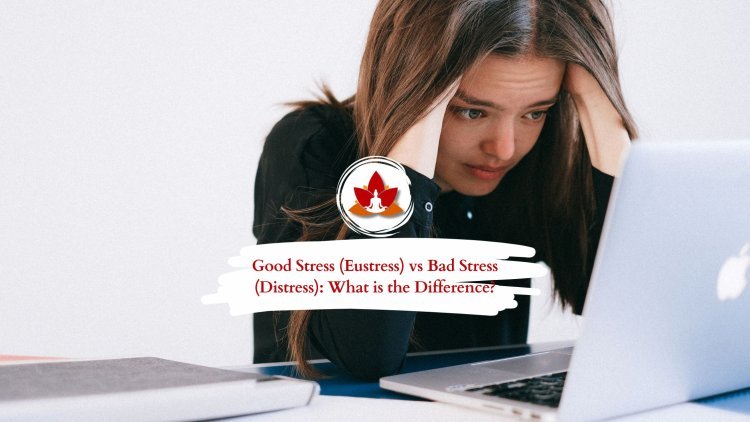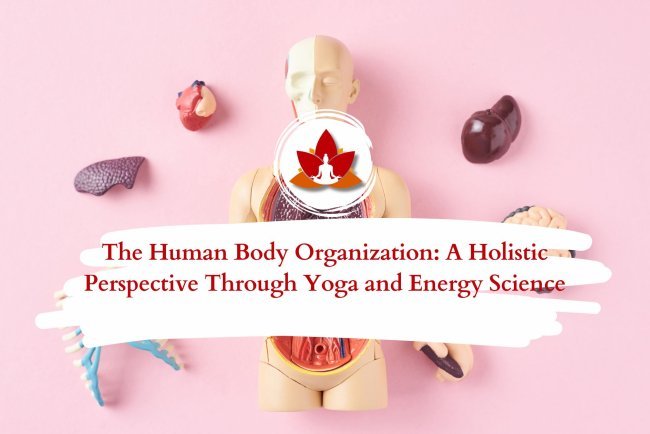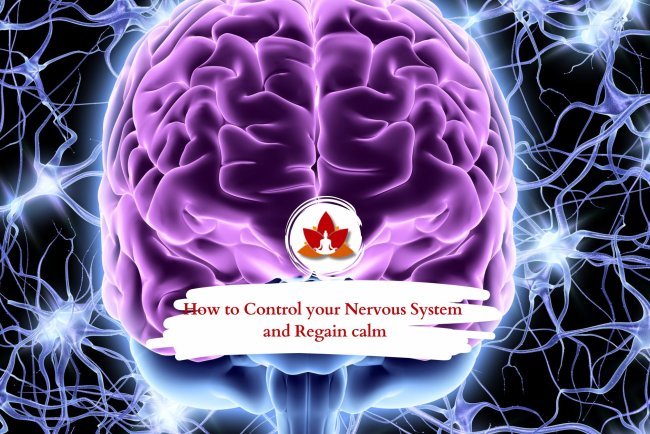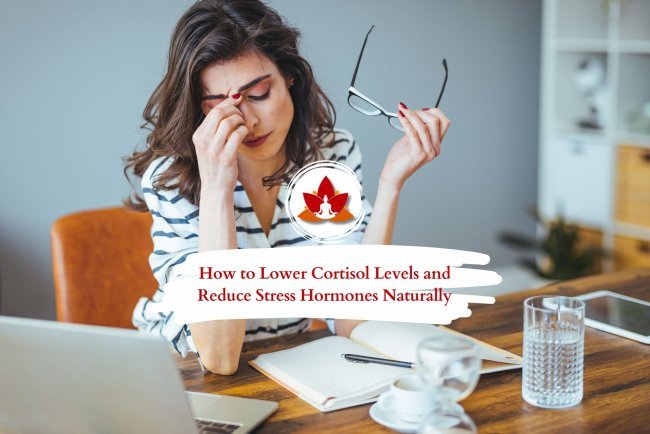Good Stress (Eustress) vs Bad Stress (Distress): What is the Difference?

Stress is a natural and inevitable part of daily life—but not all stress is harmful. While most of us associate stress with negative feelings, the truth is that some stress can be beneficial and even necessary for growth and motivation.
Eustress vs. Distress
The terms eustress and distress describe two different responses to stress:
-
Eustress is a positive form of stress. It challenges you, but it’s manageable and often leads to personal growth, motivation, and enhanced performance. Examples include preparing for a presentation, starting a new job, or taking on a fitness goal.
-
Distress, on the other hand, is negative stress. It overwhelms your ability to cope, leading to anxiety, burnout, and even physical illness. This might come from constant work pressure, financial struggles, or toxic relationships.
Whether stress becomes eustress or distress depends on individual perception, coping skills, and available resources. What energizes one person may exhaust another.
Is All Stress Bad?
Not at all. Although we often long for a "stress-free" life, some stress is necessary to stay engaged, build resilience, and accomplish goals. The key is not to eliminate stress completely, but to differentiate between helpful and harmful stress—and manage it accordingly.
Perspective Matters
Studies highlight that stress is highly subjective. A 2021 study found that the way stress impacts someone is largely determined by whether they feel equipped to handle the challenge. When people have adequate support, preparation, and confidence, they’re more likely to interpret stress as eustress. Without these, the same situation can quickly shift into distress.
-
Eustress = motivating, manageable, and growth-promoting
-
Distress = overwhelming, draining, and potentially damaging
Understanding the difference allows you to harness the power of good stress while minimizing the harmful effects of chronic or unmanaged stress.
What is Stress?
Stress is a biological and emotional response triggered by our body and nervous system in anticipation of challenging situations where heightened alertness is required. It’s the body's natural way of preparing to face demands, threats, or changes—whether real or perceived.
Understanding the Different Types of Stress
In today’s fast-paced world, stress has become an almost universal experience—affecting people across all walks of life. Whether rooted in personal responsibilities or professional pressures, recognizing the types of stress we encounter is the first step toward managing its effects on our health and well-being.
1. Acute Stress
This is short-term stress that arises from immediate demands or upcoming events—like exams, deadlines, or unexpected challenges. It’s the body’s automatic reaction to perceived threats and can actually be helpful in small doses. However, when acute stress occurs too frequently, it can become harmful.
2. Chronic Stress
Chronic stress is the result of ongoing, long-term pressures—such as a toxic work environment, financial struggles, or unresolved emotional issues. Unlike acute stress, chronic stress lingers over time and can lead to serious health conditions like hypertension, cardiovascular disease, depression, and anxiety.
3. Episodic Acute Stress
This occurs when someone frequently experiences episodes of acute stress, often due to a lifestyle filled with constant worry or chaos. People with episodic acute stress tend to be overly anxious, irritable, or feel like they’re always in crisis mode.
4. Eustress
Eustress is considered "positive stress"—it’s the type that motivates and energizes. It’s experienced when taking on meaningful challenges, such as starting a new job, preparing for a race, or learning something new. Eustress can enhance focus, performance, and personal growth.
Understanding the different types of stress allows us to pinpoint triggers and apply appropriate coping strategies. Whether it’s setting boundaries, practicing relaxation techniques, or seeking professional support, managing stress effectively leads to greater emotional balance and better health.
Is All Stress Bad?
Not all stress is harmful. While chronic stress (or distress) can negatively affect your physical and mental health, eustress—also known as positive stress—can actually be beneficial. It can enhance performance, boost motivation, and support personal growth.
Can Stress Be Good Sometimes?
Yes, in the right dose and context, stress can be a positive force. These stressors often come with a sense of excitement or purpose—think of starting a new job, raising children, or preparing for an important event. Positive stressors challenge us in a way that fosters resilience and growth.
Here are some ways eustress can benefit you:
-
Gives you a surge of energy and focus
-
Helps you complete tasks and reach your goals
-
Sharpens your attention and problem-solving skills
-
Encourages personal development and adaptability
-
Activates your body’s alert system when something needs your attention
-
Builds emotional resilience over time
How to Recognize Good Stress (Eustress)
Understanding eustress helps you harness its benefits while avoiding the pitfalls of negative stress. Here's how to identify when stress is actually working in your favor:
Boosts Motivation
You feel energized and driven to take on challenges—like preparing for a presentation or starting a new venture. If stress makes you more focused and proactive, it’s likely eustress.
Improves Performance
Good stress sharpens your alertness, creativity, and problem-solving skills. If you notice enhanced performance and better results under pressure, that’s a key sign.
Short-Term and Goal-Oriented
Eustress is typically tied to a specific event—like a competition, public speaking, or the first day of a new job—and fades once the event passes.
Leaves You Feeling Uplifted
Instead of feeling drained or anxious, you feel satisfied, accomplished, or even excited. That post-challenge fulfillment is a hallmark of eustress.
Encourages Growth
Good stress stretches your comfort zone in a healthy way. If it builds your confidence, adaptability, or skills, it's contributing to your personal growth.
How to Identify Bad Stress (Distress)
Distress, or negative stress, overwhelms the body and mind, leading to poor performance, anxiety, and a decline in overall health. Here’s how to recognize the signs:
Physical Symptoms
Bad stress often shows up in the body first. Common signs include:
-
Frequent headaches and muscle tension
-
Persistent fatigue and low energy
-
Gastrointestinal issues (e.g., stomach aches, constipation, diarrhea)
-
Sleep disturbances such as insomnia or restless sleep
-
Appetite changes and unexplained weight loss or gain
-
Skin problems like acne, eczema, or rashes
-
Weakened immunity, leading to frequent infections
Note: These symptoms may worsen over time if not addressed.
Behavioral Symptoms
Stress can influence how we behave and interact:
-
Irritability, emotional outbursts, or frequent mood swings
-
Disrupted sleep patterns—sleeping too little or too much
-
Appetite fluctuations—overeating or not eating enough
-
Increased use of alcohol, tobacco, or other substances
-
Poor concentration, reduced productivity, or procrastination
-
Withdrawal from social interactions or isolation
Emotional Symptoms
Emotionally, distress may manifest as:
-
Feeling overwhelmed, anxious, or constantly on edge
-
Symptoms of depression, hopelessness, or persistent sadness
-
Low self-esteem or confidence
-
Difficulty making decisions or solving problems
-
Feeling disconnected, unmotivated, or emotionally numb
What is Eustress and What is Distress?
Stress can be divided into two main categories:
-
Eustress – Positive stress
-
Distress – Negative stress
Eustress: The Positive Side of Stress
Eustress is the kind of stress that feels challenging but rewarding. It occurs when you believe you have the ability to handle a situation successfully. Rather than overwhelming you, it motivates and energizes you.
Example:
You're nervous about an exam but confident in your preparation. This tension pushes you to focus, perform well, and feel a sense of pride afterward.
Other examples of situations that can lead to eustress:
-
Intense but achievable exercise
-
Starting a new job or business you’re passionate about
-
Moving to a new city for better opportunities
-
Planning a wedding or important life event
Even positive changes can bring eustress—it’s not about the event, but how you perceive and manage it.
Distress: The Harmful Side of Stress
Distress occurs when you feel overwhelmed, unprepared, or unsure how to cope. It’s often linked to anxiety, fear, or helplessness.
Example:
You’re facing an exam without studying. The pressure makes you anxious, nervous, and unfocused.
Examples of situations that can cause distress:
-
Bullying or toxic environments
-
Relationship breakups (especially not by choice)
-
Death of a loved one
-
Chronic health problems
-
Manipulative or controlling relationships
Can Distress Turn Into Eustress?
Yes. Sometimes, distress can motivate change. A person overwhelmed by poor exam performance might create a study plan and do better next time—turning stress into growth. The emotional perception can shift from anxiety to empowerment.
Bottom Line:
Whether stress becomes eustress or distress often depends on:
-
Your mindset
-
Level of preparation
-
Available support
Coping mechanisms
By building resilience and learning to reframe challenges, you can turn more stressors into opportunities for growth and success.
Comparative Analysis: Eustress vs. Distress
|
Aspect |
Eustress |
Distress |
|
Duration |
Typically short-term with a clear solution or end point |
Can be short-term or prolonged |
|
Difficulty |
Perceived as challenging but manageable |
Often perceived as overwhelming or unmanageable |
|
Emotions |
May include excitement, nervousness, or satisfaction |
More likely to involve anxiety, panic, or hopelessness |
|
Self-Efficacy |
Occurs when one feels confident and capable |
Occurs when perceived ability to cope is low |
|
Physical Well-being |
Rarely harms physical health; occasional eustress may even be beneficial |
Can negatively impact physical health, especially if chronic or intense |
Influences That Impact Eustress vs. Distress
Every individual experiences stress differently—there is no “right” or “wrong” way to feel stress. Several key factors influence whether a stressful situation is experienced as eustress (positive stress) or distress (negative stress).
One major influence is access to resources. These resources can be both tangible and intangible, including:
Tangible Resources
-
Money or transportation
-
A safe and stable living environment
Intangible Resources
-
Time
-
Knowledge and education
-
Physical and mental energy
-
Good health
-
Secure employment
-
Effective coping strategies
-
Supportive social connections
According to the Conservation of Resources (COR) Theory, individuals with more personal resources are generally better equipped to handle stress and adversity. This was supported by a 2021 study on how 839 individuals in Spain responded to the COVID-19 lockdowns:
-
Those with greater personal resources—especially those reporting a strong sense of "vitality" (feeling physically and mentally well)—were more likely to experience eustress.
-
In contrast, those lacking resources such as job satisfaction, supportive family life, or adequate living space were more likely to experience distress.
Ultimately, how a person perceives and responds to stress is shaped not just by the situation itself, but by the tools and support systems they have to cope with it.
The Impact of Positive Stress (Eustress)
Positive stress, or eustress, can bring out the best in you. Here are four key ways it can enhance your life:
-
Boosts Performance and Productivity
Eustress sharpens focus and motivation, helping you meet goals and perform at your peak. -
Deepens Human Connections
Shared challenges or new experiences can strengthen your bonds with others through empathy and collaboration. -
Promotes Self-Discovery
Eustress pushes you beyond your comfort zone, helping you uncover hidden strengths and passions. -
Builds Self-Efficacy
Overcoming constructive challenges enhances your confidence and belief in your ability to handle future stress.
The Impact of Negative Stress (Distress)
Negative stress, or distress, becomes harmful when it starts interfering with your wellbeing. You may be experiencing distress when:
-
You Feel Out of Control
You struggle to set or maintain boundaries and feel overwhelmed by obligations or pressure. -
It Consumes Your Time and Energy
The stressor dominates your schedule, preventing you from engaging in things that bring joy or balance.
-
It Feels Misaligned with Your Values
The effort no longer feels meaningful or rewarding, leaving you feeling disconnected or disillusioned. -
It Forces Value Conflicts
When you're torn between competing responsibilities or values, even minor stress can lead to emotional exhaustion.
5 Effective Ways to Transform Bad Stress into Good Stress
While stress can feel overwhelming, the good news is that you can learn to reframe negative stress (distress) into positive stress (eustress). With intention and practice, almost any challenge can become a path to growth. Here's how:
1. Reframe the Situation
Train yourself to look for the silver lining. Every challenge has hidden lessons or opportunities—even if it’s not what you hoped for. If you're struggling, a therapist or coach can help you see things from a more empowering perspective.
2. Tap Into Your Strengths
Stressful times push you out of your comfort zone, unlocking leadership, creativity, and resilience. Remember past challenges you’ve overcome—you’re more capable than you think.
3. Recognize Your Resources
In tough times, take stock of what you do have: skills, support, tools, and knowledge. Sometimes we overlook the power of the resources already within our reach.
4. Lean on Connection
Collaboration and shared purpose can turn adversity into a bonding and empowering experience. Whether at work or in life, support from others can help you adapt, innovate, and thrive.
5. Embrace the Learning Curve
Stress can be a powerful teacher. Viewed positively, it encourages problem-solving, creativity, and personal growth. Lifelong learning also boosts confidence and keeps your outlook fresh and open.
Training the Nervous System with Yoga, Breathwork, and Therapy
The nervous system plays a central role in how we respond to stress—either triggering fear and tension (fight or flight) or promoting relaxation and recovery (rest and digest). Chronic stress can keep the nervous system stuck in survival mode, leading to heightened anxiety and reactivity.
Thankfully, the nervous system is adaptable. With consistent mind-body practices, we can retrain it toward greater calm, resilience, and balance.
Yoga
-
Combines movement, breath, and mindfulness to regulate the nervous system.
-
Activates the parasympathetic response (rest-and-digest state).
-
Grounding postures and slow, intentional movement help release muscular tension.
-
Promotes self-awareness and emotional stability.
Breathwork
-
Uses conscious breathing techniques to soothe the mind and body.
-
Supports vagus nerve stimulation, lowering heart rate and reducing anxiety.
-
Helps shift the body from a state of distress to calm and control.
Effective Techniques:
-
Diaphragmatic Breathing (belly breathing)
-
Box Breathing (inhale-hold-exhale-hold)
-
Alternate Nostril Breathing (Nadi Shodhana)
Therapy
-
Somatic and trauma-informed therapies help address deep-rooted patterns of stress.
-
Builds emotional awareness and coping skills.
-
Supports cognitive reframing to reduce reactivity and promote clarity.
-
Encourages responding mindfully rather than reacting impulsively to stress.
The Role of Personality and Temperament
Every individual processes stress differently, largely influenced by their unique personality and temperament. Some people thrive under pressure and see challenges as motivating, while others may quickly feel overwhelmed or irritated. These differences stem from both inherent traits and learned behavioral patterns.
-
Personality: Traits like optimism, resilience, and adaptability can shape whether a person perceives a situation as eustress (positive stress) or distress.
-
Temperament: Some individuals are naturally more reactive or sensitive to stimuli, making them more prone to perceiving stressors negatively.
Understanding your own personality type can help you better manage your reactions and develop coping strategies tailored to your natural responses.
The Role of the Environment
Our surroundings play a powerful role in determining whether stress becomes a motivating force or a source of anxiety:
At Work
-
Positive Impact: A workplace culture that promotes growth, collaboration, and mutual respect can turn challenges into opportunities for eustress and achievement.
-
Negative Impact: Poor communication, unrealistic expectations, or toxic environments often lead to chronic distress and eventual burnout.
At Home
-
Positive Impact: Supportive and nurturing relationships at home provide emotional stability and act as a buffer against daily stressors.
-
Negative Impact: Constant conflict, neglect, or lack of emotional safety can become persistent sources of psychological distress.
On Screen
-
Digital Overload: The constant flow of information and social media comparison can lead to "digital stress"—leaving individuals feeling overwhelmed, inadequate, or mentally drained.
-
Healthy Use: Setting digital boundaries and engaging in mindful media consumption can help maintain mental clarity and reduce tech-related anxiety.
How Can You Measure Stress?
Stress has two core components:
-
Stress Triggers – the external or internal causes of stress.
-
Stress Response – your emotional, mental, or physiological reaction to those triggers.
While stress triggers vary from person to person, measuring your response provides insights into how stress affects your body. Here are some of the most common ways to measure stress:
1. Heart Rate Variability (HRV)
HRV measures the variation in time between each heartbeat. A lower HRV is often associated with stress or fatigue, while a higher HRV indicates better resilience and relaxation.
2. Hormonal Testing
Two primary hormones involved in stress response are:
-
Adrenaline – increases alertness and prepares the body for immediate action.
-
Cortisol – released during prolonged stress; affects blood sugar, metabolism, inflammation, and immune response.
Measuring cortisol levels through blood, saliva, or urine can offer valuable insight into chronic stress.
3. Perceived Stress Scale (PSS)
The PSS is a widely used psychological tool developed in 1983 to assess how stressful you feel. It focuses on your thoughts and emotions over the past month rather than specific life events. It’s useful for capturing subjective stress levels.
4. Wearable Stress Trackers
Many smartwatches and fitness devices now claim to measure stress through:
-
Heart rate
-
HRV
-
Sleep data
Note: These devices offer a general picture, but they rely on limited metrics and may not always be accurate or clinically validated.
When to Get Help
Chronic or overwhelming stress isn’t something you have to live with—and doing so can harm your mental and physical health. If you find it hard to cope with high levels of stress, seek support from:
-
A medical doctor – for diagnosis and physical health evaluation.
-
A mental health counselor or therapist – for stress management strategies and emotional support.
-
A support group or helpline – for peer guidance and shared experiences.
-
Your HR department – if your stress is work-related and affecting your performance or well-being.
Begin Balancing Good Stress and Bad Stress
Stress is an inevitable part of life—but it's not uncontrollable. Every challenge presents an opportunity to grow. You may not always choose your stressors, but you can choose how you respond.
Key Takeaways:
-
Not all stress is harmful—stress can either fuel you or drain you.
-
Recognizing and managing your stress response is essential.
-
Reflect on your current stressors—are they motivating (eustress) or overwhelming (distress)?
-
The goal isn't to eliminate stress but to transform it into growth.
FAQs
Q1. What are examples of good stress?
A: Good stress, or eustress, boosts motivation and performance. Common examples include:
-
Preparing for a big presentation or job interview
-
Starting a new job or launching a business
-
Competing in a race or learning a new skill
-
Organizing a major event like a wedding
These situations are challenging but ultimately rewarding, leading to growth and fulfillment.
Q2. What is the difference between stress and anxiety?
A:
-
Stress is a short-term reaction to specific external pressures and usually subsides when the situation is resolved.
-
Anxiety is more persistent, often occurring without a clear cause, and can interfere with daily life.
Stress is often situational; anxiety tends to be ongoing and internal.
Q3. How is good stress (eustress) different from bad stress (distress)?
A:
-
Eustress is positive, energizing, and helps you rise to challenges—it’s short-term and manageable.
-
Distress is negative, overwhelming, and long-lasting. It often results in fatigue, anxiety, and even physical illness.
Understanding the difference helps you channel stress toward productivity instead of burnout.
What's Your Reaction?


























